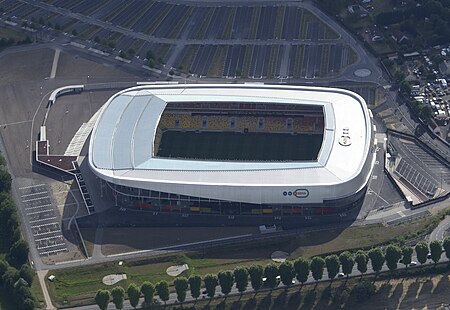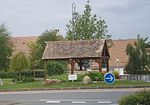Stade Marie-Marvingt
21st-century architecture in FranceFootball venues in FranceFrench sports venue stubsLe Mans FCSports venues completed in 2011 ... and 1 more
Sports venues in Sarthe

The Stade Marie-Marvingt (previously MMArena) is a multi-use stadium in Le Mans, France, that opened in January 2011. It is used mostly for football matches and hosted the home matches of Le Mans FC. The stadium has a capacity of 25,064 people. It replaced the Stade Léon-Bollée as the club's stadium. The arena is located inside the Circuit de la Sarthe, home of the famous 24 Hours of Le Mans, and adjacent the first right kink on the Mulsanne Straight.
Excerpt from the Wikipedia article Stade Marie-Marvingt (License: CC BY-SA 3.0, Authors, Images).Stade Marie-Marvingt
Chemin aux Bœufs, Le Mans
Geographical coordinates (GPS) Address External links Nearby Places Show on map
Geographical coordinates (GPS)
| Latitude | Longitude |
|---|---|
| N 47.959 ° | E 0.2234 ° |
Address
Stade Marie-Marvingt
Chemin aux Bœufs
72100 Le Mans
Pays de la Loire, France
Open on Google Maps








